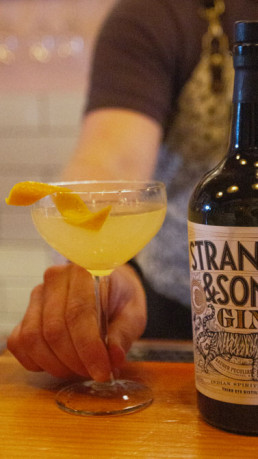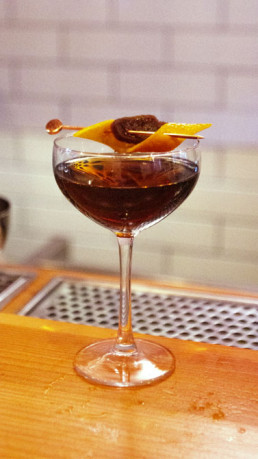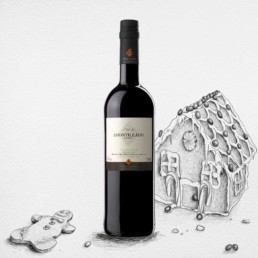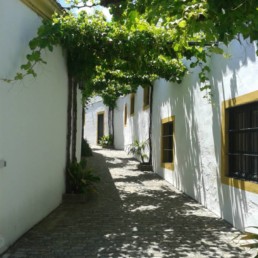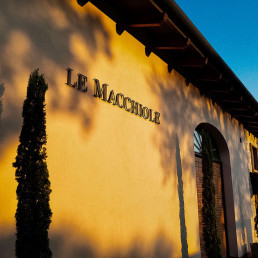D&N Wondermaker
Bodegas Rey Fernando de Castilla
Boutique Sherry Maker
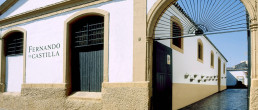
Welcome to the renaissance of Sherry – it’s no longer just for your Nana! Once dismissed as an outdated fortified drink, it’s become a beloved cocktail ingredient for hip mixologists and is rising phoenix-like from its unfortunate association with average aunties and naughty nanas swigging sweet cream sherry on the sly. Fittingly, Dhall & Nash’s exalted Wondermaker this month is boutique sherry house, Bodegas Rey Fernando de Castilla – almost embarrassingly award winning and world renown for their high-end, intricate sherries.
“Sherry is the last of the world’s great wine bargains.”
Bob Campbell, MW
What better reason for us to deep dive into this multi-dimensional, hauntingly complex beverage which can be served as an aperitif, matched to multiple cuisines, suitably paired with elegant degustation menus, mixed in refreshing cocktails, and of course, slurpingly appreciated by every sommelier and wine geek this side of K’Rd. Thankfully the world is slowly waking to the extraordinary potential of sherry as an impeccable fine wine.
We hope you’re Sherry Curious too! Come along as we unfurl the glorious idiosyncrasies of sherry with vinous gems from our D&N Jerez producer, Fernando de Castilla.
“Like Riesling lovers, us sherry lovers are a tribe. We get this. If the rest of you don’t, it’s your loss.”
Tamlyn Currie, Wine Writer for JancisRobinson.com
La Historia
The History
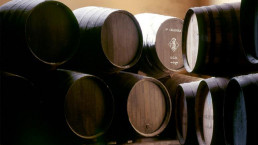
Bodegas Rey Fernando de Castilla’s story began with the aristocratic Andrada-Vanderwilde family, who for two centuries provided grapes and wine for the production of sherry in the classic Sherry producing zone of Jerez de la Frontera.
Shifting with the increased demands of the 70’s and in a strategic move, Fernando Andrada-Vanderwilde in 1972 took over some old cellars from sherry giant Pedro Domecq, as well as brandy soleras from Marqués del Real Tesoro. Andrada-Vanderwilde created the brand “Fernando de Castilla” initially with the aim of producing the most select brandy in Spain. He was honouring the Spanish king Fernando “The Saint” who had conquered large parts of western Andalusia and discovered the exceptional properties of the soil and climate in this region, ideal for viticulture.
The modern incarnation of Bodegas Rey Fernando de Castillo took shape as the brainchild of Norwegian-born Jan Pettersen. With his 15 years’ experience at sherry house Osborne, he saw the potential of the bodega and together with a group of investors, bought Fernando de Castilla in 1999. With his ideas and vision, he enhanced the brand to become one of the most exciting of the Denominación de Origen (DO) Jerez / Xéres region. Over time, it has come to be known for its innovation and consistent quality.
When Jan Pettersen bought the company, he also acquired a neighbouring almacenista (a sherry stockholder who sells wine to shippers), José Bustamente. Further, he formed a partnership with a local grape grower – to ensure consistent supply of high-quality grapes – unusual for the smaller bodegas, who usually have to rely on co-operatives. He decided to focus entirely on high-end, complex sherries – in the process upgrading the bodega to become one of the most highly regarded of the small independent sherry houses in Jerez.
Jan focused entirely on high-end, complex sherries, and usually single-solera. While some of them are old enough to carry a VOS or VORS label, the bodega doesn’t believe in this system. Pettersen feels that it does not accurately reflect what makes sherry so special. To confirm his belief, he once offered for appraisal a 20-year-old sherry to the tasting panel of the Consejo Regulador (all DO sherry rules are defined by this regulatory office). The panel assessed the aromatic characteristics and labelled the wine as VORS (30 years old). Pettersen refused their classification – it confirmed his belief that an exceptional sherry isn’t necessarily always very old, and a label doesn’t tell you the whole story. Bravo!
“Sherry is hot right now among sommeliers, writers, and other opinion peddlers in the wine world.”
Wine Spectator
El Lugar
The Place
Fernando de Castilla is located in the historic centre of Jerez in the old Barrio de Santiago where nowadays more bodegas are appearing again. As is normal in this area, the company does not own vineyards but instead buys sobretabla (wine in the top row of the solera system) wines from partner growers in the pago Añina, with some grapes from the pago El Cuadrado as well. Compared to many others, Fernando de Castilla is a small-scale bodega, most of its wines are only available in yearly volumes of 4000 to 20,000 bottles.
La Filosofía
The Philosophy
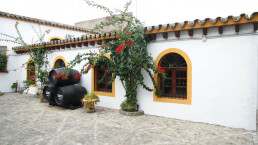
Following Pettersen’s founding philosophy, the bodega specializes in natural, unblended and unfined sherries as supreme examples of the ancient winemaking traditions of the Jerez region. The vineyards they source from are farmed without pesticides or herbicides and all their sherries are estate bottled.
There are two ranges: Classic, and the premium Antique range. The premium Antique range was quite innovative when it was launched, for having clear glass bottles (emphasising the colour and age of the contents) and a 500ml format (highlighting the value). It is the excellence of the award-winning Antique range of intensely pure and complex single solera Sherries that has largely driven Fernando de Castilla’s reputation as masters in the production and ageing of fine Sherries.
Some years after the Antique range, they also launched a successful mid-market Classic range. Again, never compromising on their individuality. Fernando de Castilla have made their name as a bit of a rebel bodega – yet the results speak for their commitment to quality, singularity, and distinctiveness.
“The rolling landscape with its brilliant white soils – this can only be Sherry country.”
Sarah Jane Evans MW, Decanter
Jerez
El viento, el sol y la tierra
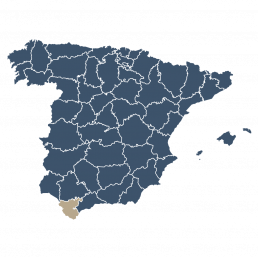
Other countries may have tried to make a fortified wine in the style of Sherry, but none can reproduce the terroir found in this corner of Southwest Spain. This is unique terroir as the locals extol – “El viento, el sol y la tierra” – it’s the wind, the sun, and the soil. It’s the balance between these three elements that makes Sherry so magical.
The vineyard areas of the Sherry Triangle are divided into different zones, known as ‘Pagos’. Some of the better known pagos include Macharnudo, Carrascal, Añina and Balbaina. Each pago has different climate, aspect, geographical and soil characteristics which contribute to the quality and character of the grapes. For instance, there’s an ongoing debate about whether the pagos nearer the sea create saltier grapes and whether this might be responsible for some of Manzanilla’s salty character. Some sherries specify which pagos their grapes originate from on the label.
Fun Sherry Fact – A good sherry harvest needs vigorous vines in their absolute prime. Therefore, unlike most winemaking regions, vineyards in the Sherry Triangle don’t retain old vines. Vines are usually replaced every 30-35 years, on a rotation basis. When old vines are removed, the land is rested for two years before the new vines are planted.
Generally, the Sherry triangle gets almost 300 days of sun each year and around 70 days of rain. During the dry, hot summers, the wind from the ocean brings some moisture to the vineyards, and the clay in the soil keeps the water under the surface. The famous bright white ‘albariza’ soil is a limestone marl which is deep with up to 40% calcium carbonate. This treasured soil has a highly porous structure thanks to the millions of diatomic marine fossils it contains. It soaks rainwater up like a sponge, and then the sun bakes the surface into a hard crust which locks the water inside so it can’t evaporate. Because it’s so crumbly, the roots can penetrate it easily, often travelling for many metres. This means the roots can access precious water during the dry Andalusian growing season.
Since irrigation is forbidden, it’s vital that every drop of rain that falls is captured in the albariza soil. Rain falls in the autumn and winter, often in short but torrential downpours. To catch all the water, the soil between the rows of vines is dug into small square troughs that the water can collect in. This process – known as ‘aserpiado’ – minimises run-off and gives the soil chance to soak up all the rain that falls. At the end of the rainy season, the soil is flattened again.
Another key aspect of the climate is the winds. The Poniente is the humid west wind. The Levante is the south-eastern wind, hot and dry. These two winds blow across the region and give the unique open-air Sherry cellars the right combination of humidity and temperature to gently age the wines in barrel.
The Jerez region is bounded by the Guadalquivir River on one side, and the lesser Guadalete on the other, and to the west, the Atlantic ocean. The town of Sanlúcar, at the mouth of the Guadalquivir, shows the maritime influence most strongly with its pungent but delicate wines (Manzanilla de Sanlucar). Jerez finos are bolder, more structured, reflecting the more intense climate and the distance from the sea. Interestingly, El Puerto lies between the two, geographically and stylistically.
Classification
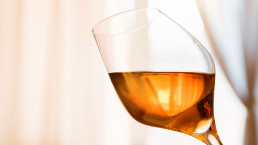
The classification DO Jerez-Xérès-Sherry was founded in 1933, Spain’s first. It is situated in the province of Cadiz. Until recently (2021) for wine to be covered by the D.O., Jerez-Xérès-Sherry had to age within one of the three corners of the so-called triangle of: Jerez, Sanlúcar de Barrameda and El Puerto de Santa María (though the grapes could come from other places within the D.O.). Now under the updated law, the bodegas of Trebujena, Lebrija, Chipiona, Rota, Chiclana and Puerto Real will be able to make and age their wines locally and still label them Jerez-Xérès-Sherry.
For more than a century, there have been three permitted grape varieties for Sherry production—palomino, pedro ximénez and moscatel. But now, seven more are authorized; all have historic ties to the region but were forgotten after phylloxera hit at the end of the 19th century. The newly authorized grapes are beba, cañocazo, mantúo, castellano, mantúo de pilas, perruno and vigiriega.
Further sweeping changes have been approved by the Consejo Regulador de las Denominaciones de Origen “Jerez-Xérès-Sherry.” In this conservative region, these decrees may mark a revolution. No area of Sherry-making has been left untouched, from vineyards to grapes to fortification to aging regulations and labelling. Perhaps the most striking change awaiting final approval, is the option not to fortify the wines. These modifications have been approved by the Consejo Regulador, they must be ratified by the Junta de Andalucía and by the Spanish government before being sent to the European Union for final approval. Watch this space!
“Anyone who has not felt the rock-salt grip of manzanilla, the pressed-white-flowers-into-focaccia of fino, the haunting lost song of palo cortado, the old-photo-albums-nostalgia sweetness of amontillado and the deep-bone biting sepia ache of oloroso has, surely, not lived”
Tamlyn Currie, Wine Writer, Jancis Robinson.com
The Dhall & Nash Selection of Fernando de Castilla Sherries
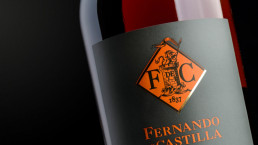
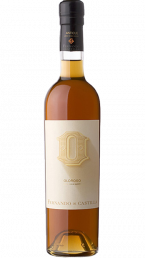
Oloroso Antique Sherry
Fernando de Castilla
Blend: 100% Palomino Fino
Vineyards: Grapes are grown on estate vineyard “Pago Balbaino” on white albariza soils containing 70-80% limestone.
Winemaking: The Antique Oloroso averages over twenty years in age, which qualifies it as a VOS (Vinum Optimum Signatum or Very Old Sherry). Grapes are pressed and fermented in stainless steel and then headlined to 20 degrees and undergoes oxidative aging in the traditional solera and criaderas system.
“The NV Antique Oloroso is open and expressive in the nose, with a predominant note of hazelnuts and varnished wood, a sweet touch of spices, brandy filled chocolates and orange rind. The perfectly balanced palate shows intense, clean, pure flavors and great length. 5,000 bottles produced yearly.”
18/20 – Jancis Robinson MW
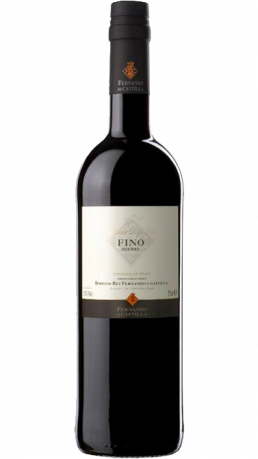
Fino Classic Dry Sherry
Fernando de Castilla
Blend: 100% Palomino Fino
Vineyards: Grapes are grown on estate vineyard “Pago Balbaino” on white albariza soils containing 70-80% limestone.
Winemaking: The grapes are pressed and fermented in stainless steel. Headlined to 15% and subjected to biological aging under flor yeast in oak barrels for the traditional solera and criaderas system. The average age of the wine is 5 years.
“This has enticing range, with hints of nectarine and white peach out front, followed quickly by a saltier profile of chalk, quinine, Brazil nut and citrus oil. The long, vigorous finish has lovely spine, leaving a ‘fleur de sel’ note echoing.”
91 Points – James Molesworth, Wine Spectator
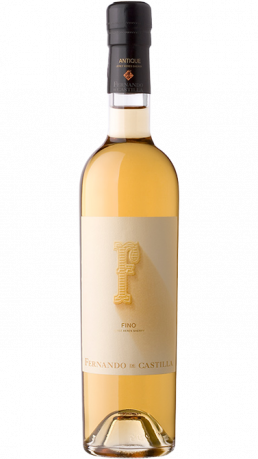
Fino Antique Sherry
Fernando de Castilla
Blend: 100% Palomino Fino
Vineyards: Grapes are grown on estate vineyard “Pago Balbaino” on white albariza soils containing 70-80% limestone.
Winemaking: Antique Fino is a wine of four criaderas that originate from a selection of barrels from the Classic Fino solera that were set aside and left untouched for five years. In contrast to highly filtered, fairly young modern Finos that have been fortified only once, this wine boasts a formidable average of 9 years age at bottling, sees minimal filtration and a second fortification (the old-fashioned way).
“The NV Antique Fino is eight years of average age when bottled; it’s fragrant and perfumed, feminine and subtle, with dry flowers and a rare balance between old and young. The palate shows a much more serious wine, pungent, intense, saline, sharp and at the same time delicate, complex, and long. A most unusual old-style Fino. Bravo!”
17.5/20 – Jancis Robinson
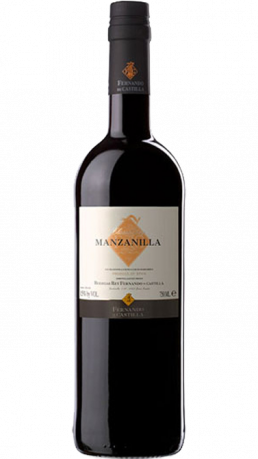
Classic Manzanilla Sherry
Fernando de Castilla
Blend: 100% Palomino Fino
Vineyards: Grapes are grown on estate vineyard “Pago Balbaino” on white albariza soils containing 70-80% limestone and elaborated in Sanlúcar de Barrameda.
Winemaking: The grapes are pressed and fermented in stainless steel. Headlined to 15% and subjected to biological aging under flor yeast in oak barrels for the traditional solera and criaderas system. The average age of the wine is 3 years.
“Shows a lightly honeyed edge, with beeswax and paraffin notes lining the core of lemon curd, white peach, meringue and sunchoke. The long, floral-filled finish is lacy and alluring.”
91 Points – James Molesworth, Wine Spectator
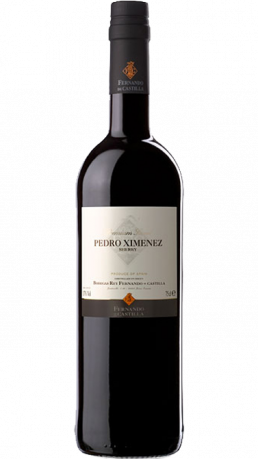
Pedro Ximénez Classic Sherry
Fernando de Castilla
Blend: 100% Pedro Ximénez
Vineyards: Grapes are grown on estate vineyard “Montalbán” on white albariza soils containing 70-80% limestone.
Winemaking: Pedro Ximénez is made by drying the grapes under the hot Spanish sun, concentrating the sweetness. The grapes are then pressed and begin fermentation while fortified to 15%. Because the wine has not completed fermentation, much of the sugars remain where it is aged oxidatively in the traditional solera and criaderas system of oak barrels. The average age of the wine is 8 years.
“PX is so much more than sweet, or old. Fernando de Castilla’s Jan Pettersen doesn’t just want raisins in a glass, he’s looking for dates, figs, leather, and tobacco. Stunning complexity.”
95 points – Decanter
There’s so much to choose from! Sip your way through our Fernando de Castilla selection – will you be seduced by the light and dry Fino, or the oxidative Oloroso, or the sexy syrupy PX. Don’t worry, you don’t have to love them all, but you’d be crazy if you can’t find a favourite. And remember, Sherry is a wine meant to be enjoyed with food – any of these Fernanda de Castilla Sherries will elevate your next gastronomic experience. Have fun & SALUD!
Fun Sherry Fact – Sherry contains antioxidants that help control cholesterol levels. Four of the most commonly produced Sherries, Oloroso, Manzanilla, Fino, and Amontillado, were tested and all four increased the body’s production of ‘good’ cholesterol, which medical experts think helps to carry potentially harmful cholesterol away from the arteries and back to the liver.
A Bit of Ancient History
Sherry is one of the world’s oldest wines, with the earliest reference believed to be from Greek geographer Strabo in the 1st Century BC. He writes that the Phoenicians brought the vines to ‘Xera’, the Jerez region in 1100 BC. The city of Cádiz became a place of trade between the Phoenicians and the Spanish. By the time the Romans conquered the land, viticulture was at the forefront of their empire. Soon, Ceretanum, or “wine from Ceret” was being spread around the Roman empire as an early version of Sherry. Then came five centuries of prohibition under Islamic rule, dating from 711 AD. After which King Alfonso reconquered the city. As it was at the frontier it acquired the name Jerez de la Frontera.
Subsequently the wine trade with England and the Low Countries prospered. In the late 19th century phylloxera interrupted supply. With the replanting, the diverse range of indigenous varieties narrowed to the three that prevail today, mainly Palomino (with some Moscatel and a little Pedro Ximénez, both used for sweet wines).
The next challenge was commercial. Inevitably, it came from the British. They fostered the Empire’s sherry imitations: from Cyprus, South Africa, Australia, and even NZ. It was a number of decades before Sherry was able to defend its right to its own name. Though the region is proud of its heritage, it is also striving to stay relevant to modern consumers.
“It’s a style of drink from another era, when wine was more like booze, and even among the great fortified wines, it’s hard to deny that Sherry sticks out. It doesn’t taste like wine is “supposed” to taste”
Wine Spectator
Geek Out on Sherry
Based on how they are aged – ‘oxidatively’ or ‘biologically’ – there are strictly speaking just 2 basic types of sherry: Fino and Oloroso. Fino being light and very dry or Oloroso being richer and full, but also dry. Sweet Sherries are made by sweetening either type.
Once a year the Palomino grapes are picked and fermented into a fairly flavourless dry white wine of moderate alcohol (11-12.5% vol.). Now it starts to get interesting. At this point, when the wines are put in casks, the special Sherry magic begins. A yeast called flor grows spontaneously on the surface of the wines destined to be finos. The flor eventually covers the whole surface, protecting the wine from oxidation. The flor feeds on oxygen in the air and on alcohol and glycerin in the wine. It changes the wine’s character, contributing a distinct aroma and flavour and rendering the wine finer and more delicate in texture.
Flor doesn’t grow on olorosos-to-be because their higher alcohol content prevents it. Without the protection of the flor (and because the casks are never filled to the brim), these wines are exposed to oxygen as they age – hence the distinctive oxidative characters of these sherries.
The winemaker (the master blender with the Nose!) decides which Sherries will become finos or olorosos by judging the appearance, aroma, and flavour of the young, unfortified wines staying within the House style naturally. If a wine is to be a fino, the winemaker fortifies it lightly (until its alcohol level reaches about 15.5 percent). He strengthens future olorosos to 18 percent alcohol. All Sherry is fortified with a neutral spirit made from the Airén grape grown in the region of La Mancha.
But wait there’s more to geek out on! One of the most defining features of sherry is the traditional method known as the Solera-criaderas system. Also known as fractional blending.
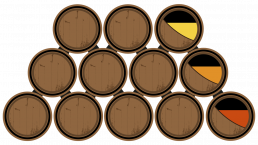
Weirdly, like Champagne and Scotch, Sherry is a blended product. The Solera system creates a wine that is the product of as few as 3 or as many as 100 vintages and is well worth the price.
We’ll try to keep it simple… Think of a pyramid of barrels four rows high, with older wines at the bottom and younger ones at the top. Instead of emptying an entire barrel into bottles, only a portion of an older barrel is emptied, then topped up with wine from a younger barrel one row up. That row of barrels is then topped up with even younger wines, and so on.
For even more geeky detail – The bottom row of the pyramid of barrels, or the solera (from the Spanish word for floor, suelo), contains the oldest wine. The barrels or butts – as they’re called – placed in subsequently higher tiers on top of the solera are called criaderas, meaning “nurseries.” The highest row contains the youngest wine, and the rows are numbered in order of proximity to the bottommost tier: 1st criadera, being the closest, followed by 2nd criadera, etc.
The aging process is as follows: at specific intervals, an amount of wine from the oldest, floor-level cask is removed (in a process called saca) for bottling. This barrel is then topped off with wine from the next tier up, and so on, until reaching the top row. The top-tier of casks then has “base wine” from the añada system (wine from a particular vintage) added to it, although none of the 500-liter casks are filled completely.
This act of topping off the barrels is called the rocío (sprinkling), and the whole saca and rocío process is called correr escalas (running the scales). The wine that is taken out to be bottled is therefore a mixture of all the wines above it – hence its lack of vintage – created in an endless process of mixing and aging that produces some of the world’s most distinctive wines. Not only does this process serve to preserve the characteristics of the wine in the solera, but it also minimizes any variations that might occur from one year to the next.
Although this description explains the basic functioning of the solera-criadera aging system, the product can be affected by other factors. One is the type of wood used for the casks, though American oak is now the most common. Another is the frequency with which the wines are moved through the system – operations called trasiegos – and the quantity and frequency of the sacas depends on the characteristics sought after by the winemaker. Different types of sherry wines are also subject to different treatment.
The premium-ization of Sherry did not begin in earnest until the 2000s, with the adoption of standards for VOS (“Very Old Sherry”—an average of 20 years in the solera) and VORS (“Very Old Rare Sherry”—30 years) and the practice of releasing single-almacenista bottlings from the small producers who would typically sell their wines off to larger houses, to disappear into the big soleras.
Fun Sherry Fact – During the Colonial period Sherry casks were too expensive to ship back from England, so they were used to store whisky. Distillers noticed a great improvement in the flavour after storage and thus, the Sherry cask aged Scotch was born.
Sherry Styles
Fino Sherry
Typically made from Palomino grapes Fino ages with a layer of living yeast, “flor” on top (Biological aging). This special film of yeast forms over the base wines placed in the top group of casks, creating a seal over the wine that prevents it from oxidizing, thereby preserving its brightly straw-coloured hue, among other things. Its alcohol level is 15%. It’s brought up to that level with fortification from a grape spirit, but the added spirit in Fino is minimal. Typically smelling of almonds, yeast, and lemons, it’s bone dry and refreshing. Often used as an aperitif and served with pre-dinner snacks such as olives, jamón, tomatoes and cheese, it’s also good with poultry, seafood, and fried foods. (Fino and fried chicken – oh yeah!)
“Fino represents the fresh-faced, aromatic side of the Sherry family.”
Sarah Jane Evans MW
Manzanilla
Manzanilla is closely related to Fino, produced similarly but in different regions. It is biologically aged in Sanlúcar de Barrameda and has its own DO – “Manzanilla – Sanlúcar de Barrameda”. It has more salinity than Fino, a quality attributed to the salt in the air of the coastal region influencing the flor. Manzanilla is made to marry with any tapas, or oysters, anchovies, raw fish, olives, almonds.
Amontillado
Arguably the best of both worlds, Amontillado starts life as a Fino before undergoing further ageing without its protective blanket of flor. This style of sherry exemplifies how the solera-criadera system can bring together both biological and oxidative aging processes. The wine is initially aged under flor for a period of around three to eight years. Typically, the winemaker/blender chooses when to end this biological aging process by fortifying the wine, bringing the alcohol level to around 17% and thereby killing off the yeast. The wine continues to age in the blocks of casks, but this time through oxidation, which allows it to develop warm amber tones and spiced, nutty notes. Often creamy, and textured, with dried fruit and citrus peel characters. Perfect to pair with roast pork, hard cheeses, meatballs or even a steak sandwich.
Oloroso
In the case of these mahogany-hued, wonderfully nutty, and complex sherries, the solera-criadera system is used entirely for oxidative aging. The base wine is fortified to 17% in order to prevent the flor from forming, and the wine’s oxidation is aided by moving the wines from one cask to the next. Long periods of aging can also result in the evaporation of some of the wine’s water content through the porous wood casks, leading to more intense flavours and aromas that can range from deeply toasted, to spiced and/or balsamic.
Palo Cortado
Palo Cortado is a dark reddish Sherry style with about 22% ABV. It is an oxidatively aged Sherry made with younger wine. This Sherry undergoes two fortification stages and is similar to a lighter-bodied Oloroso. Divine with cured meats, Manchego cheese, smoky almonds, and tapas.
“Drinking Sherry is not a fad. It’s pushing us forward on trying to rethink what wine can be.”
Paul Grieco, Legendary Sommelier/Owner Terroir Wine Bars NYC
Sweet Sherry Styles
Naturally sweet sherry is produced by stopping the fermentation mid-way. This prevents the conversion of all the residual sugar into alcohol. Depending on the grape variety, there are two types of naturally sweet sherries:
Pedro Ximenes
The PX grapes are picked and allowed to dry on straw mats in the sun until they begin to shrivel. The intense and very sweet grape juice that results is then fermented but the fermentation is stopped by adding alcohol (which kills the yeast cells) while the wine is still very sweet. Match with dark chocolate cake, figs in honey, date pudding, drizzled over ice cream. Boom!
Moscatel
This Sherry is produced with fully or partially sun-dried Moscatel grapes. It has an intense floral nose, medium acidity, and a sweet unctuous palate.
Fun Sherry Fact – It’s low on calories. – Enjoy Sherry with tapas guilt-free! Dry Sherries are low in calories –A glass of Fino or Manzanilla contains approx. 45 calories. A typical red wine can contain anything between 100 and 150 calories and a typical white can be more. So, if you want to cut those calories you know what to do. Just avoid the sweet wines… Also, Finos and Manzanillas have very low histamine content. Everyone blames sulphur, but it’s usually histamine which causes hangover headaches.
The following sweet sherries are made by blending two or more fully aged Sherry wines in the bodegas. They are classified as:
Pale Cream Sherry
The Pale Cream Sherry style is a biologically aged Fino Sherry or Manzanilla wine with 45-115 grams of sugar per litre.
Cream Sherry
It is a sweeter Sherry wine (115 -140 grams of sugar per litre) made by blending Amontillado or Oloroso with Pedro Ximenez.
Medium Sherry
Medium Sherry is made from Amontillado and has about 5-115 grams of sugar per litre.
Cool Sherry Cocktails
There’s a sherry for all seasons and for all occasions. We’ve had Jack, our D&N spirits Ambassador, playing with some very groovy sherry cocktail ideas. Because it’s so multi layered and refreshing, it can be added to create twists on some classic cocktails, particularly those with gin, substituting some of the gin for Fino for example. Have fun experimenting too!
- Stranger & Sons Gin
- Fernando De Castilla Fino or Manzanilla
- Lemon
- Orange Bitters
This is a modern day classic normally made with Fino. Swapping out the Fino for Manzanilla adds extra depth with the slight addition of salty sea spray.
- Fernando De Castilla PX
- Bourbon/ Rye Whiskey
- Dry Vermouth
- Candied fig & Orange twist garnish
This is twist on a manhattan, using the PX like a sweet vermouth adds a more fruit forward and approachable style of a Manhattan.
